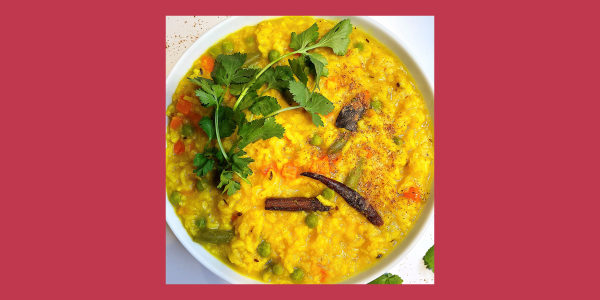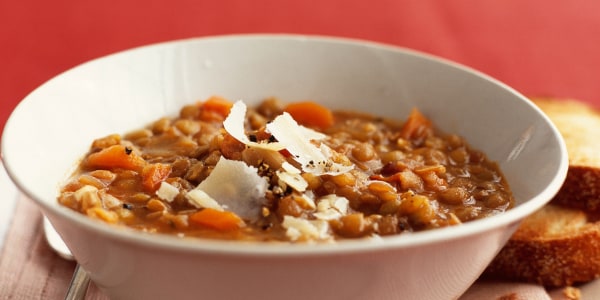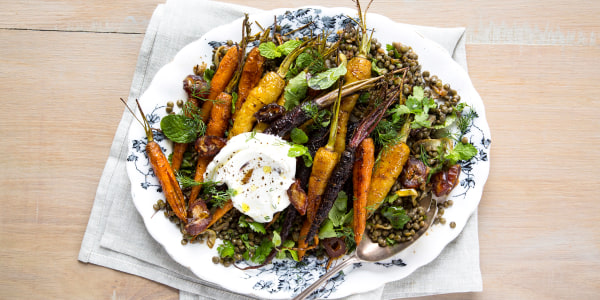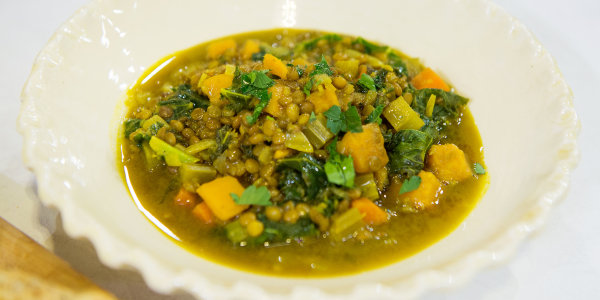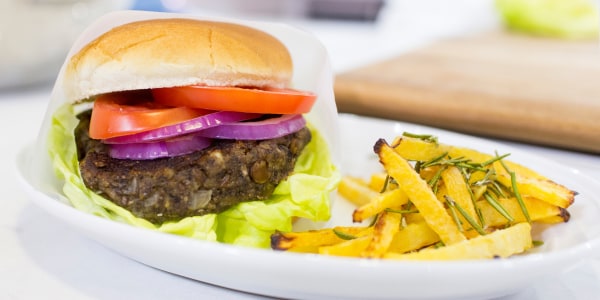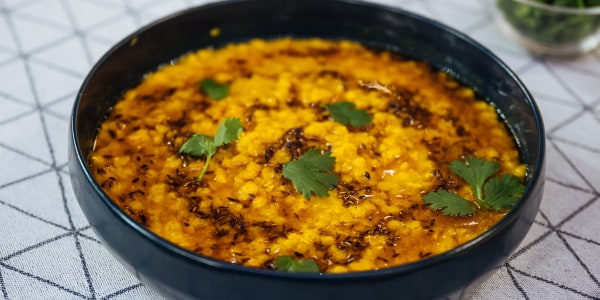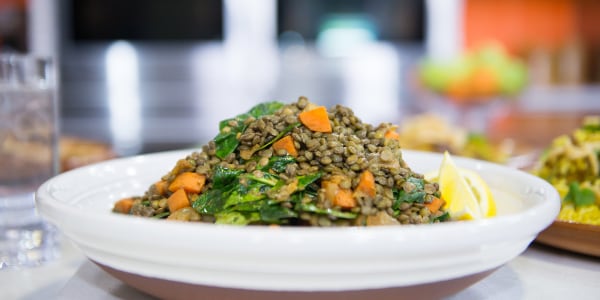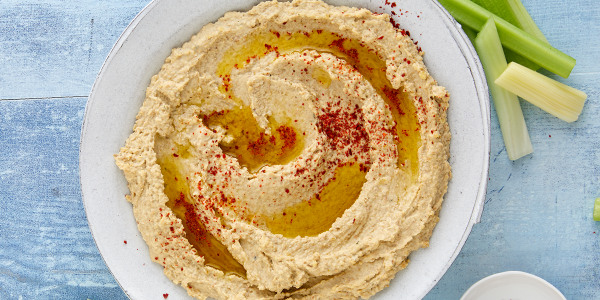Lentils often get the undeserved rap that they are boring. But people all over the world know the truth — that they're versatile, satisfying and the perfect low-maintenance alternative to beans. Lentils are a staple food in the cuisines of South Asia, North Africa, the Middle East, various South America countries, as well as Greece and Italy.
These legumes may have suffered from the false assumption that anything healthy isn’t enjoyable. After all, lentils are incredibly healthy — they're high in fiber, iron, protein and B vitamins and a source of prebiotics. They can be cooked and flavored so many ways, require almost no prep work and cook fast enough that you can enjoy them for a weekday meal. So, really, what’s not to love? Here’s a guide for how to cook lentils.
How to prep lentils
Before cooking, you’ll want to sort and rinse your lentils. Put dry lentils in a sieve or colander and look for any debris; sometimes you’ll find small pebbles so you’ll want to do your teeth a favor and discard those. Rinse with fresh water.
Generally, unlike beans, lentils do not need to be soaked before cooking. There are, however, some preparations, like the Indian porridge khichdi or dal, that call for lentils to be soaked to help make them really soft and easy to digest.
How to cook lentils
First off, try to use lentils that aren’t super old. If they’ve been sitting in the back of your cupboard for years, you’re going to need to cook them longer; they take more time to soften up.
One cup of dry lentils will get you about 2½ cups of cooked lentils.
How long you cook lentils depends on both the type of lentils you’re cooking and the final dish you’re making. If you’re adding lentils to salads or to a soup where you want to keep them intact for texture, you’ll want to use French lentils or black lentils and stop cooking them before they fall apart. For preparations like Ethiopian misir wot, you’ll want to use red lentils and cook them until they are pretty much a puree.
How to cook lentils on the stove
Here’s a general cheat sheet for cooking some common types of lentils on the stove:
- Red lentils: 15-20 minutes; 5-10 minutes for split red lentils
- Yellow lentils: 20 minutes (you want these lentils to get soft and break down)
- Green lentils: 20-30 minutes
- French lentils (Puy lentils): 30 minutes, up to 45 minutes, depending on the softness you want
- Brown lentils: 20-25 minutes
- Black lentils: 25-30 minutes, up to 40 minutes, if you want them to get soft and fall apart
You’ll use 2 to 3 cups of liquid for each cup of dry lentils. Because lentils soak up the flavors around them, add aromatics like sautéed onions and garlic, bay leaves and spices like cumin and coriander that you’ve bloomed in oil. You can also use a flavorful stock for your cooking liquid instead of water. While you can and should season the cooking liquid, hold off on adding salt until the end of the cooking time; adding salt too early can prevent the lentils from softening.
Keep the water at a simmer, taking care not to overcook lentils or letting your liquid turn into a roaring boil. Note that cooked lentils can be stored in the fridge in an airtight container for up to four days.
How to pressure-cook lentils
Add your liquid, aromatics and spices to the pressure cooker or Instant Pot and set for 5 minutes for red lentils and up to 9 minutes for black and French lentils. The machine does take about 10 minutes to come to pressure, so while it will save you some time on black and French lentils, it doesn’t save you as much time with red lentils.
Lentil recipe ideas
Now this is the fun part. There are so many amazing recipes for lentils out there, we can barely scratch the surface. Here are a few ideas:
Soups, stews and chilis: You can use any kind of lentils for soups — it just depends on the texture you want to achieve. Red and yellow lentils will get super soft and just melt into the liquid, basically becoming the base of your soup. French lentils will hold their own and are great for chunkier soups and stews where you want the texture of individual ingredients, like a mushroom, kale and lentil stew. French, green or black lentils work great as the protein in vegetarian chili, which can then used in sloppy Joes or atop french fries.
Veggie burgers: Use cooked lentils blended with aromatics, vegetables and your grain-of-choice to make vegetarian patties that you can grill, bake or pan fry and serve on hamburger buns. Brown lentils work great for this.
Lasagna: Layer lasagna with cooked lentils and Italian herbs in place of beef for a vegetarian option.
Indian lentil dishes: You could eat lentils every day and you’ll still never get through all of the Indian lentil recipes out there. “Dal” means lentil, and you’ll find a plethora on any Indian restaurant menu. Try lentil coconut curry, creamy dal makhani (which combines black lentils with kidney beans), khichdi and mulligatawny soup, among many others.
Braised lentils: Topped with sausage, this is a classic Italian dish that’s perfect as a side for a crowd.
Salads: Beef up any kind of salad — without any meat — by using cooked lentils. Either green, French or brown lentils work great for this.
Tacos and burritos: Spice up lentils with taco seasoning and use in place of meat for delicious vegetarian tacos.
Hummus: Instead of using chickpeas to make hummus, you can also use lentils, cooked and cooled, to make the creamy dip.
It’s time to take your taste buds around the world and try a diverse array of lentil-based dishes.

